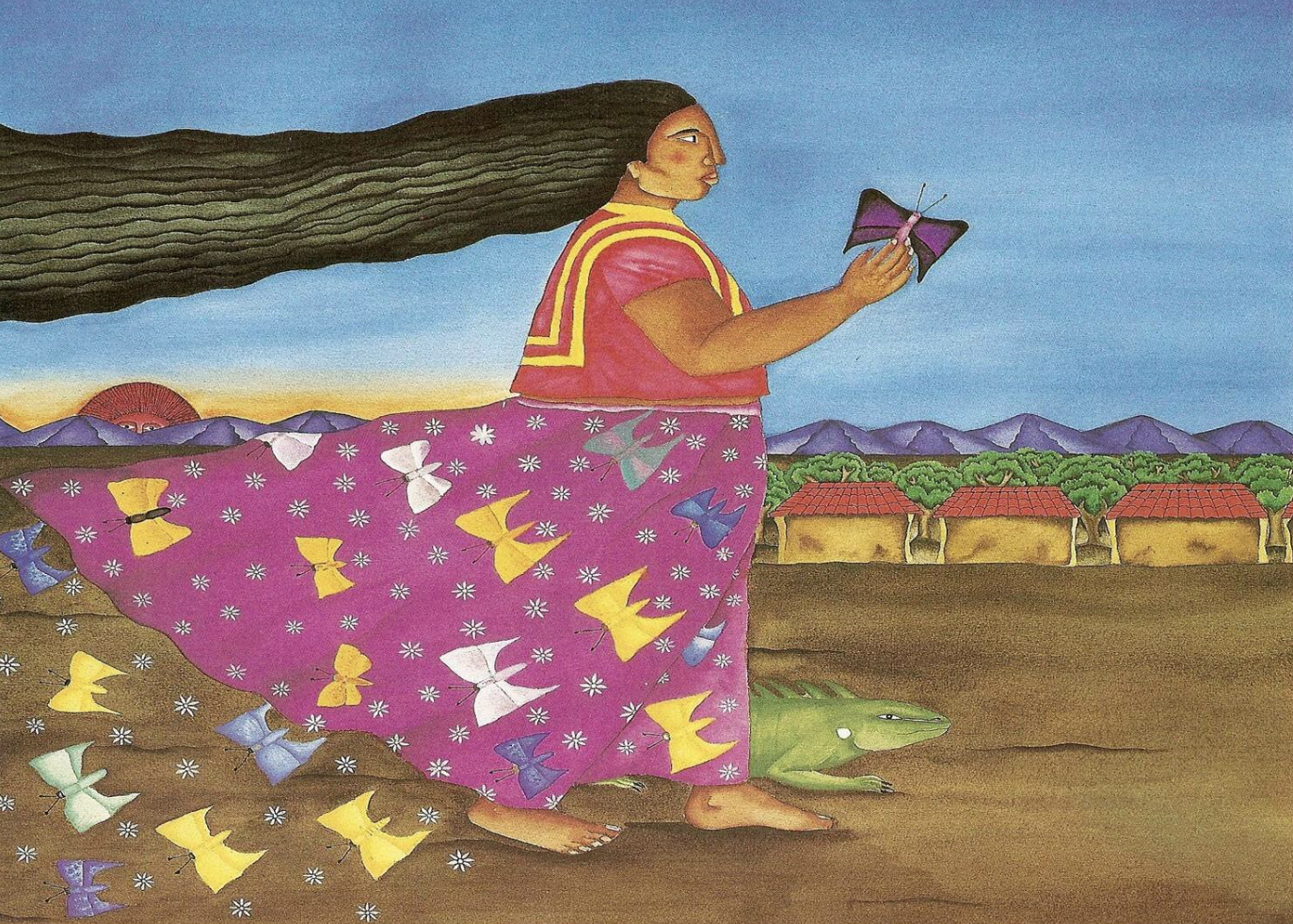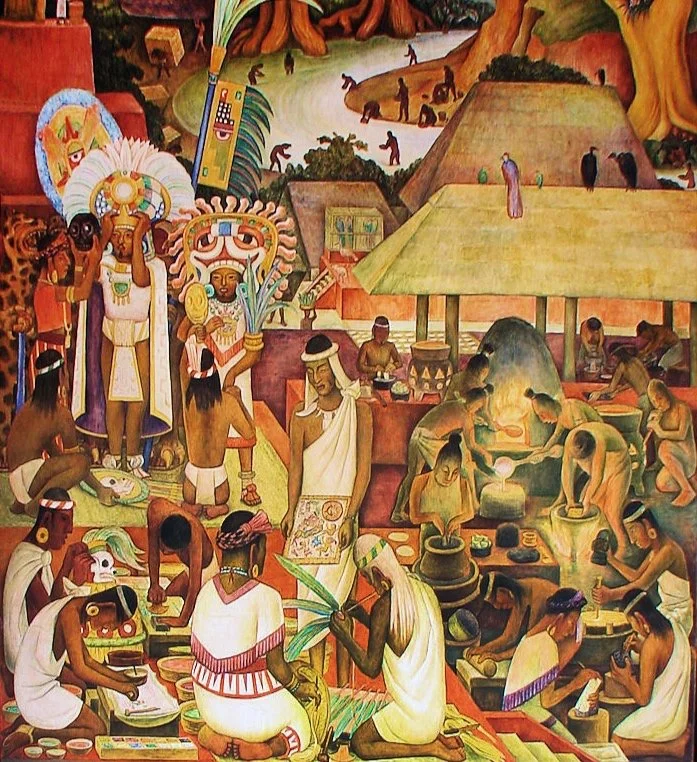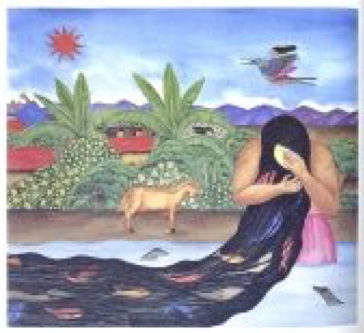La mujer que brillaba aún más que el sol
Children’s literature makes for great classroom material for all ages. The language is complex and the messages are universal. Explore this story with scaffolded activities that make it accessible for learners.
About the project
This is a poignant Mexican folktale based on a poem by Alejandro Cruz Martinez that delves into issues of identity, stereotype and discrimination – issues that are very relevant to students’ own lives and that are worth discussing. The main character in the tale, Lucía Zenteno, is proud of who she is and of being different from others. She remains strong in her faith in herself and teaches others, who fear her because they don’t understand her, to learn to accept, respect and value her differences. It’s a good lesson that’s applicable to our world. And who doesn’t love listening to a good story?
A Three-Part Unit
I usually do this unit on folktales from Latin America right after a short unit on “la niñez,” which serves as a great preamble to children’s literature. It helps to have talked about the students’ own childhoods and the books they read and enjoyed as young children. Have the messages they learned in those storybooks impacted them in any way? Do they still hold any relevance today? These are the essential questions of the unit. In terms of language structures, this unit works well, as stories often do, with the past tense and that is what I focus on while teaching the story.
I say this is a three-part unit because I teach three full stories and La mujer que brillaba is just one of them. All three stories highlight the issues of identity; they complement each other and provide opportunities for thoughtful comparison and contrast of these issues. The two other stories are El caipora (which is actually a Brazilian folktale, but it’s available in Spanish) and Las huellas secretas (available on Amazon), but you can also teach this story by itself. It is just as meaningful and impactful!
Project details
Level: Spanish Intermediate, Advanced, IB Ab Initio, IB SL
Inquiry Question: How are the messages from the stories we read in our childhood relevant today? ¿Cómo son relevantes hoy los mensajes de los cuentos que leímos durante la niñez?
Authentic Material: La mujer que brillaba aún más que el sol
Grammatical Structures: El pasado – pretérito e imperfecto
Final Project: Students create an original children’s story to be read to a Spanish class in the elementary school or any beginner-level Spanish class.
Lucía Zenteno, la protagonista del cuento
Content and Language Learning Objectives:
Learn about the Zapotec people and their culture
Read a Mexican folktale and examine the themes of identity, discrimination and stereotypes present in in
Present a summary of one’s favorite childhood book and describe the theme and message
Describe the events in a story using the past tense
Differentiate between narrative descriptions and events using the imperfect and preterite
Create a short story using the past tense to present to a lower level Spanish class
Materials & Activities
Introduction and Activating Background Knowledge
Cuentos de hadas, fábulas, cuentos populares y leyendasI focus on two themes in this story: (1) the idea that folktales, while they are steeped in the cultures of the places where they were written, have value and contain universal messages that are always relevant; and (2) the idea of stereotypes and how those can lead to fear and discrimination. I ask the students to represent their understanding and interpretation of these themes in the stories they write as final projects.
La cultura zapoteca
To provide a setting for the story, I introduce my students to the Zapotec culture that this story comes from. I use the map and picture in this presentation to talk about life in a typical Zapotec village. There is also some great information on this website, especially about the importance of nature for the Zapotec people, which is very relevant to the story.
Representación de la cultura zapoteca en un mural de Diego Rivera
Identidad, estereotipos y discriminación
A quick activity to get students thinking about their own ideas and thoughts on these three concepts helps to later make the connection with how they are presented in the story. I have adapted this activity to Spanish from this great English language lesson plan. I have groups of students brainstorm their thoughts about what constitutes a person’s identity, what is a stereotype, and how discrimination manifests itself. I ask them to put their thoughts down in this table and save it for later, as they will add to the bottom section after reading the story. Another way to do this is to find dictionary definitions of these terms and frame some questions around them for groups to discuss and share or add their personal interpretations of each definition.
Delving into Content
Introducción al cuentoBefore we actually read the story (or before i present it), I present some key vocabulary which I practice in different ways, either by associating gestures and actions with the words or through visual clues. The students have seen the cover of the book by now and they may have guessed what the story is about based on the cover image and title, so they have some context for the new words. I have the students work in pairs using the illustrations of the story. They use the new words as they make up their own story based on the images, just one sentence or two for each image. They can then share their stories with the class or within a small group. Now they have a little context for the real story, which will make it easier for them to understand it.
Cómo entender el cuentoI like to present the story orally using the images, maybe with some back-and-forth questions and answers while presenting so I can check for understanding. Once I’ve presented the story, students read it however works best for them – out loud with a partner or quietly on their own or in groups of three. Over the course of the next few classes we do various activities that help the students delve a little deeper and focus on the identity issues at the heart of the story. I found some excellent resources for this story on the two websites cited below that provide great depth to this unit. Here are a few activities to choose from:
Mapa del cuento: A simple mapping-out of the story to reinforce understanding.
Q&A: Questions and answers about the story.
Fantasía y realidad: Classifying the events of the story to see how fantastical elements are used to highlight the message. This activity could lead into a discussion about differences and how they can become barriers to understanding others. (Taken from and credited to https://eric.ed.gov/?q=hair&ff1=pubGuides+-+Classroom+-+Teacher&ff2=locIowa.)
Evento y resultado: Using the preterite tense to talk about the consequences of the major events in the story. (Taken from and credited to https://eric.ed.gov/?q=hair&ff1=pubGuides+-+Classroom+-+Teacher&ff2=locIowa.)
El pasado: A fill-in-the-blank activity using the preterite and imperfect tenses.
Identidad: Circle back to the question of identity using the sheet that students had filled out at the beginning of the unit. Have them complete it with their thoughts about the how these issues are dealt with in the story. (Adapted from Loraine Woodard’s unit: http://www.readwritethink.org/classroom-resources/lesson-plans/using-picture-books-explore-952.html?tab=1#tabs)
FAN n PICK activity: A fun way to get students to discuss the events in the story, along with some additional questions to ponder. FAN is an activity that I have taken from Martina Bex (you can find her explanation of how it works here along with some templates).
Writing: You can always use the essential question of the story in a final writing task and have students use this story as a reference to cite examples.
Cuando se peinaba, los peces volvían al río
Los niños le pidieron perdón
Final Project/Assessment
The students write their own short stories or fairytales based on the themes of identity and discrimination. They then have to read out their stories or present them to a lower-level Spanish class or a Spanish class in primary school.
Additional Materials/Resources
A narration of the story is available here. Depending on the level of your students, they could listen to it the first time as an audio story.
Read, Write, Think International Reading Association has a well-developed unit on identity, stereotypes and discrimination using this book as one of the readings. It’s in English, but the ideas are adaptable.
I hope this information was helpful! I would love to connect with you if you have any questions. Please feel free to submit the form below with your query and I will respond as soon as possible.
Let’s connect
I hope this information was helpful! I would love to connect with you if you have any questions. Please feel free to submit the form below with your query and I will respond as soon as possible. I also have a few additional materials to share, if you want more!





